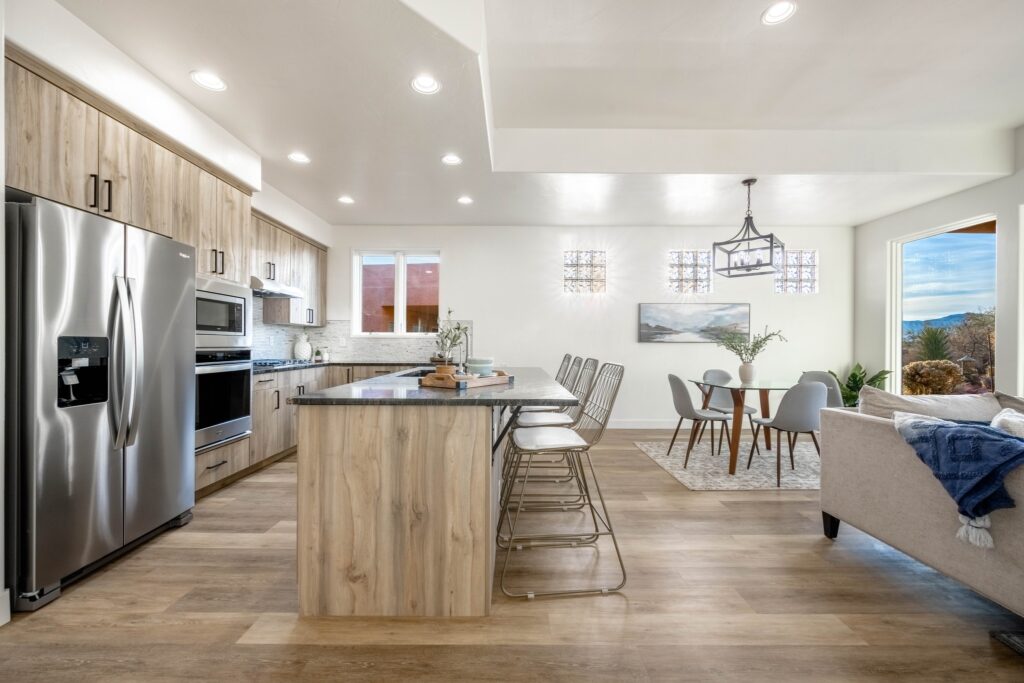
Remember back in 2011 when everyone was addicted to Pinterest? Looking back, it’s like it happened overnight.
Suddenly, all your friends were fashionistas. Everyone’s kitchen table required only a canister of chalk paint to give it new life. We could make anything in the slow cooker — apple cider, Thanksgiving dinner, gourmet dog food. The possibilities were endless (and occasionally inedible).
Pinterest is how we planned our vacations, organized our garages, and found the best quotes for our home screens. We planned parties, styled photoshoots, discovered new ways to overcomplicate back-to-school season, and in the midst of it all, we decided to renovate our homes.
Forget hiring a contractor. You were armed with degrees in Construction Management and Interior Design from Pinterest University.
It all looked so easy, you know? DIYing your kitchen could not be that hard. If KimsKitchen08 could do it, you could, too!
If any of this sounds familiar, I’m sure that you, too, have a storage bin full of unopened products (to go with the basement full of unfinished projects).
The 2010s may not have turned us into superstar home renovators, but I’ve since learned the big secret to completing these projects, and I’m going to share it with you. Are you ready? Here it goes…
You have to take on projects that will pay for themselves.
An excellent example of this is adding square footage to your home. Any time you add square footage to a house, specifically a bedroom or bathroom, it’s usually a sound investment, which comes down to basic math.
Homes here in St. George typically sell for about $300 per square foot, but the current cost of renovation is about $150-250 per square foot. (Of course, these numbers are approximate. The specific finishing you choose will always affect the outcome, but this gives you a general idea of the expense.)
That means adding an extra 400 square feet would cost about $80,000… but could add as much as $120,000 to the value of your home! This is especially true if you’re going from two to three bedrooms or from three to four bedrooms. More bedrooms = more demand.
Another renovation that usually pays for itself is upgrading an outdated kitchen. The key here is tackling an older kitchen. If you’re demolishing a perfectly good one that you’re not in love with, you’re probably not going to “get your money out” of the project.
But if you bought a fixer-upper with a kitchen that’s 25 years old, and you spend $40,000 updating that kitchen, in nearly every instance, your home’s value increases by about $40,000. If your property was dated compared to similar homes on your street, bringing your house up to the “neighborhood standard” is almost always a good investment.
The final renovation that usually pays for itself is a master bathroom remodel. Again, it’s usually best to update an old, outdated bathroom if your top priority is making the project pay for itself. You won’t add value to the house if you demo a perfectly good bathroom. You may like that new bathroom much more, which is always nice, but you won’t necessarily see a monetary ROI.
People tend to overpay for homes that have gorgeous kitchens and master bath suites, so this is where you should spend your money if you’re concerned with maximizing your home renovation budget.
But I’m on a roll now, so bonus tip #4: If done right — and this is a big IF — investing in tasteful landscaping/curb appeal almost always returns its cost. Frankly, it’s not expensive to buy fresh flowers, plants, mulch, or even perform minor exterior updates like fresh paint, new siding, or new shutters. This is the first thing a buyer sees when they walk up to your house (and the same is true of an appraiser if you’re looking to refinance). Small investments in curb appeal can make a big difference.
Ultimately, any renovation is good if you have the money to pay for it and it makes you happy. You don’t always have to view your home as an “investment” whose sole purpose is to make money. Your home should bring you joy!
Your Pinterest-inspired DIY days may be behind you, but don’t give up on the home renovations that truly matter. Your future self (and your future self’s wallet) will thank you.
